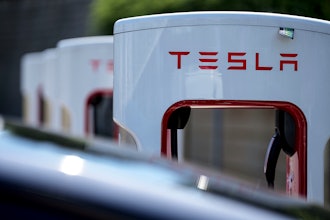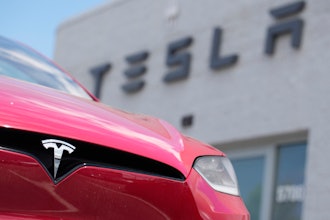LOS ANGELES (AP) -- California has declared war on vampires, but this time it's no Hollywood monster flick.
The state will be the first in the nation to target so-called vampire battery chargers that suck up and waste as much as 60 percent of the electricity they consume. The California Energy Commission voted 3-0 on Thursday to regulate such power-sapping chargers despite objections by consumer product makers.
California's standards take effect next year, and several states in the Northwest are eyeing similar regulations. The U.S. Department of Energy is also working on setting national standards for battery chargers.
"Once again, California is setting the standard for energy efficiency, keeping the state's dominance as the most energy efficient state per capita," said commission chair Robert Weisenmiller.
Manufacturers say the move is the first step toward a patchwork of requirements that could drive up costs and end up costing consumers more for their appliances gadgets.
"It essentially means manufacturers are going to have to retool for California and they may have to retool again when DOE comes out with their final standard," said Jill Notini, spokeswoman for the Association of Home Appliance Manufacturers. "There could be implications for cost of products and choice of products."
California has long been a leader in pushing efficient energy use with the state's energy consumption per capita remaining flat for more than three decades in comparison with the rest of the nation, which has seen a 40-percent increase. The state's energy saving standards are often the basis for later federal standards, according to the commission.
"They're watching California very closely," said Pierre Delforge, a senior engineer with the Natural Resources Defense council, which supports the new standards. "Usually when California does something, they move next."
Proponents say such regulations are long overdue with the popularity of portable electronic devices such as smartphones and tablets. There are now an estimated 170 million chargers in households across the state with an average of 11 chargers per household.
Chargers waste electricity by continuing to draw electricity even when a battery is full and suck energy when laptops, cellphones, digital cameras and other devices aren't plugged in. They also often contain outdated components that don't charge efficiently.
On average, each household has 40 devices that are constantly drawing power. Such standby power consumption accounts for about 13 percent of residential electricity use in California in comparison to 10 percent nationally, said Alan Meier, a senior scientist at Lawrence Berkeley National Laboratory.
"It's clearly going to rise over time, so California has two reasons to be more concerned about these kinds of devices because our electricity prices are higher and these devices represent a larger fraction of residential electricity usage," he said.
The new standards, which require chargers to consume less energy while providing the same service, will take effect on Feb. 1, 2013. The new regulations are expected to save enough electricity to power nearly 350,000 homes, or a city about the size of Bakersfield. The commission estimates the new standards will save residential and commercial ratepayers $306 million each year.
As far as concerns raised by manufacturers, Delforge said the commission worked with trade and environmental groups for more than a year before adopting the new standards, making some concessions to help product makers meet the new regulations.
"It requires a change in their design, and changes always require more effort and more engineering and more design time, and if they don't have to do it they'd rather focus on other things," he said. "If they had to pay the electric bill, we'd already see these changes in the marketplace."






















